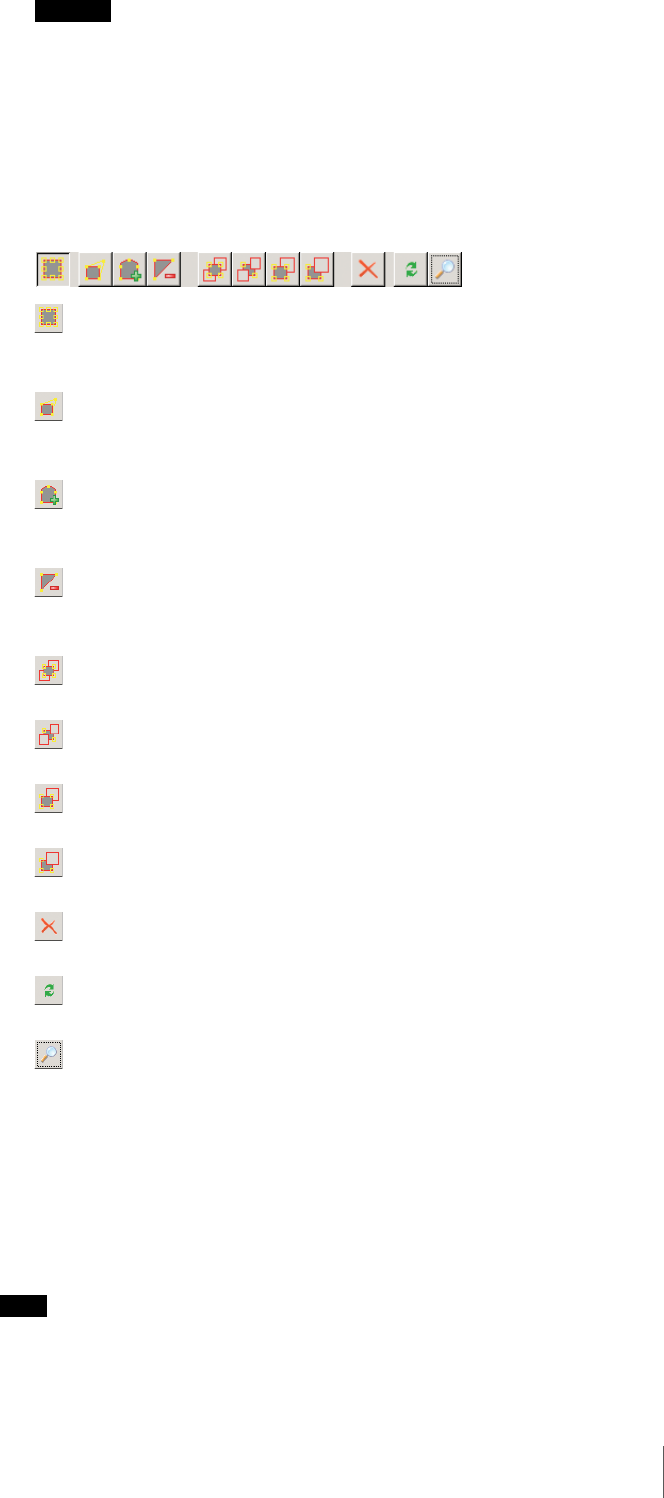
111
Chapter 5 Settings
Caution
For [Gaussian Blur] and [Mosaic], because the blur size (in pixels) does not
change as the image is zoomed, zoom out as far as possible before setting a
mask with these patterns. Otherwise, the mask will not be visible until the
image is zoomed in.
3
While checking the image in the preview, use the buttons to create and edit
the mask.
Buttons and functions
(Move Polygon)
Use this button to move a mask or to create a rectangular mask by dragging
a mask edit point.
(Edit Points)
Use this button to add/delete edit points and to create masks in complex
shapes.
(Add Point)
Use this button to divide a line at a specific location.
You can also add an edit point to a mask by clicking a line.
(Remove Point)
Use this button to decrease the number of lines by one.
You can also remove an edit point from a mask by clicking an edit point.
(Bring to Front)
Moves the selected mask to the top of a stack of overlapping masks.
(Send to Back)
Moves the selected mask to the bottom of a stack of overlapping masks.
(Bring Forward)
Moves the selected mask up one level in a stack of overlapping masks.
(Send Backward)
Moves the selected mask down one level in a stack of overlapping masks.
(Delete Polygon)
Deletes the selected mask.
(Refresh Image)
Refreshes the still image that includes all the masks.
(Preview)
Displays a live image from the camera that includes the masks.
This allows you to confirm how the configured masks appear.
4
For a camera equipped with pan, tilt, and zoom functions, use these buttons
to control the pan, tilt, and zoom of the camera, and to confirm whether the
camera moves properly so as to hide the area you set.
5
Click [Save] at the top right of the window.
Note
A mask area configured for a camera with pan and tilt functions may shift when
the camera is panned, tilted, or zoomed. When configuring the mask area, please
allow for approximately 10% (of the full image size) additional space
surrounding the object you wish to mask. In addition, be sure to position the
